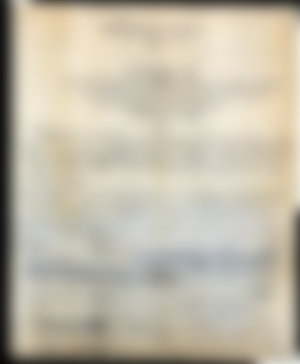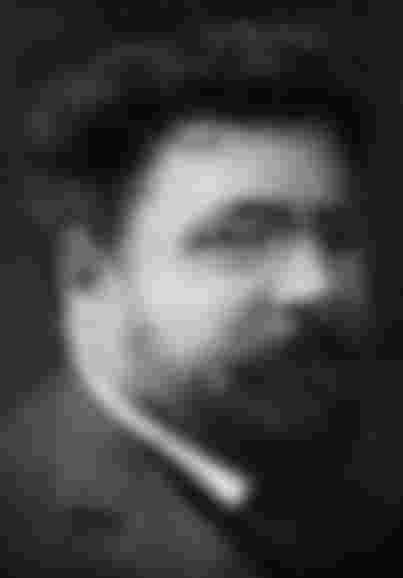I have previously written about authors Sir Arthur Conan Doyle and Edgar Allan Poe, two pioneers in the field of detective stories. We all know about their logical detectives Sherlock Holmes (Conan Doyle) and Auguste Dupin (Poe). But there is also a French author, filling same niche in French literature. This French hero is named after his bullet-shaped head. Yet I bet only a few of you know his name or who this French author is.
Another work by this author - a criminal story, but without his bullet-headed hero - is well known around the world. Maybe not as much as a novel as for its several movie versions, and, not at least, for a late twentieth century musical which was a great success in London.
The author is Gaston Leroux (1868-1927), French writer in many genres. His most famous work is “The Phantom of the Opera” (Le Fantôme de l'Opéra, 1910), a novel that is the basis for a famous musical (1986) by Andrew Lloyd Webber.
(Image below: Gaston Leroux in 1907. Photographer Unknown. Public Domain.)

Many of Leroux's detective stories (not “Le Fantôme”) feature a hero called Rouletabille, a nickname referring to his bullet-shaped head.
The Phantom of the Opera takes place in the Paris Opera House, (Palais Garnier, which served as the main Paris Opera between 1875 and 1989) ,mostly in its vast underground parts. The description of this environment, its size and its complexity, appears quite fanciful; but although Leroux applies some poetic licence, he describes it as it basically is, or was. With an underground lake (or river) and tunnels in several levels, this is a fascinating place for an adventure of the imagination, like "The Phantom of the Opera". If you happen to be in Paris, you can visit this interesting building. It is a “Monument historique” since 1923.
The underground lake is still there, but its present use is quite prosaic: firefighters train swimming there.
(Image below: "Le Fantôme de l'Opéra", first page of the original manucript.)

There was an article about the Opera House in Schribner's Magazine in 1879. The author no doubt is impressed:
"Giant stairways and colossal halls, huge frescoes and enormous mirrors, gold and marble, satin and velvet, met the eye at every turn."
I quote three paragraphs of the article:
"The site of the Opera House was chosen in 1861. It was determined to lay the foundation exceptionally deep and strong. It was well known that water would be met with, but it was impossible to foresee at what depth or in what quantity it would be found. Exceptional depth also was necessary, as the stage arrangements were to be such as to admit a scene fifty feet high to be lowered on its frame. It was therefore necessary to lay a foundation in a soil soaked with water which should be sufficiently solid to sustain a weight of 22,000,000 pounds, and at the same time to be perfectly dry, as the cellars were intended for the storage of scenery and properties. While the work was in progress, the excavation was kept free from water by means of eight pumps, worked by steam power, and in operation, without interruption, day and night, from March second to October thirteenth. The floor of the cellar was covered with two coats of cement, another layer of concrete and a coat of bitumen. The wall includes an outer wall built as a coffer-dam, a brick wall, a coat of cement, and a wall proper, a little over a yard thick. After all this was done the whole was filled with water, in order that the fluid, by penetrating into the most minute interstices, might deposit a sediment which would close them more surely and perfectly than it would be possible to do by hand. Twelve years elapsed before the completion of the building, and during that time it was demonstrated that the precautions taken secured absolute impermeability and solidity.
The events of 1870 interrupted work just as it was about to be prosecuted most vigorously, and the new Opera House was put to new and unexpected uses. During the siege, it was converted into a vast military storehouse and filled with a heterogeneous mass of goods. After the siege the building fell into the hands of the Commune and the roof was turned into a balloon station. The damage done, however, was slight.
[...]
There are 2,531 doors and 7,593 keys; 14 furnaces and 450 grates heat the house; the gaspipes if connected would form a pipe almost 16 miles long; 9 reservoirs, and two tanks hold 22,222 gallons of water and distribute their contents through 22,829 2-5 feet of piping; 538 persons have places assigned wherein to change their attire. The musicians have a foyer with 100 closets for their instruments."
If you are into detective stories and appreciate those by Conan Doyle and Poe, why not try reading Gaston Leroux as well? If you do not read French, that is no hindrance; most of Leroux's books have been translated to English.
Related articles: Poe: A Personal View & Egyptomania & Horror Literature
Copyright © 2017, 2021 Meleonymica/Mictorrani. All Rights Reserved.
Here you find my articles related to literature.
For history, legends and myths, join my community History, Myths, Legends & Mysteries (be45).
You find all my writings on Read.Cash, sorted by topic, here.

